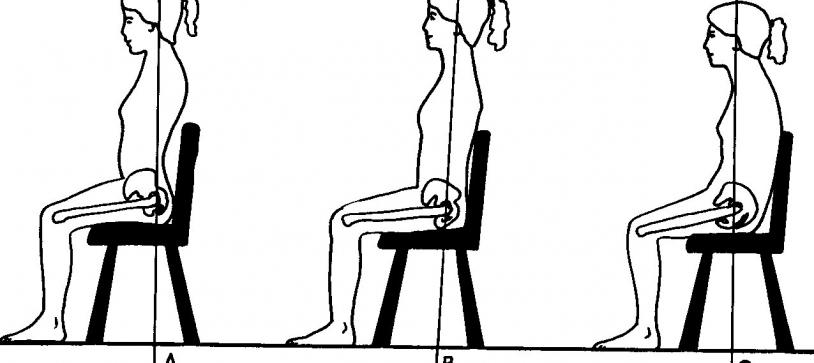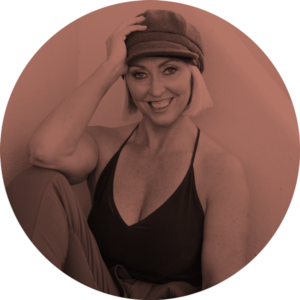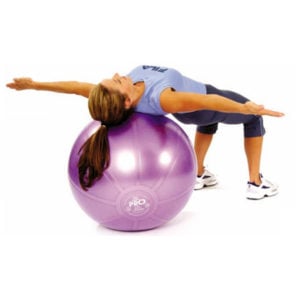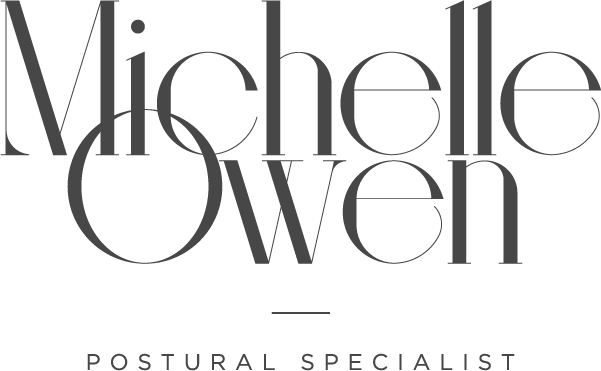We are not designed to sit for long hours in one place! Yet many people work in jobs requiring them to sit all day, usually in front of a computer. If this sounds like you, consider how much stress you are placing on your body. Unless you’re sitting in an appropriately aligned position, at a correct ergonomic workstation, you run the risk of injury, pain and discomfort. Throughout my many years working with people as a corrective exercise specialist, I have seen, heard and dealt with their pain on a daily basis. Often their problem stems from poor body alignment while sitting, working long hours. Many come to me as a last resort after spending countless hours and dollars seeing various doctors, therapists and specialists – to no avail. Often clients ask me if they should sit on a Swiss ball or some sort of fancy chair to help with the improvement of their body position at work. The truth is it doesn’t matter what you are sitting on, unfortunately there is no special chair that will resolve things if you don’t know where your body should be to take the stress off the neck, upper or lower back.
The key to start improving pain/discomfort:
– Knowing how and where the body should be aligned – Appropriate stretching and strengthening to hold it in this position As postural muscles gravitate to the wrong position for many hours on a daily basis, they become chronically overworked. Ergonomics and the body is therefore important as it causes the muscles to shorten and tighten which then alters our spinal curvature. Where there are short or tight muscles there are weak muscles opposing (muscle imbalance). Muscle imbalance is extremely common and can cause nasty things to happen to our bodies, including: – Degeneration in the upper and lower spine – Prolapsed discs – Thoracic (mid-back) vertebra that get stuck in flexion causing other vertebra to become too mobile. – Trapped nerves – Repetitive strain injuries such as overuse syndrome and carpel tunnel – Nasty headaches – Breathing dysfunction…and the list goes on!
Avoiding the Dowager’s hump
If you already have bad posture and pain, then you will need more than a correct ergonomic station to rectify it, because unfortunately, muscle imbalance can also lead to a Dowager’s hump. This is a condition that is fast becoming a common sight to my trained eye. A Dowager’s hump is a fatty deposit (hump) that builds up just below the neck, as it tries to stabilise or do the job of postural muscles that are not working. It can be visually unpleasant and extremely painful, it zaps our energy! To correct this long term, you will need to do the associated mobilizations, stretching, and strengthening work alongside having correct ergonomics in place. All go hand in hand and one without the other is simply not powerful enough. C.H.E.K. Practitioners specialise in this combined approach. Find one in your area to start correcting your posture sooner rather than later. (Reference: Paul Chek, ‘The Importance of Ergonomics in Rehabilitation’.)
How an ergonomic work station can help
If you work at a desk, then your work station is a critical step in becoming more aware of your posture in everyday life. Many people sit with poor posture without even realising it. Why? Because your body becomes used to being in the wrong position. It identifies that wrong position as the position of strength and normality. So much so that the right position feels almost bizarre to it! As soon as your mind veers off to your work, your body pulls back to your position of strength. Every inch that your body sits forward is the weight of your head dragging on the upper back/neck. A chair too high can cause compression behind the knees causing numbness and slow circulation to the lower legs and or swollen feet! When a chair is too low it can flatten the back, and block the sciatic nerve, which can lead to bulging discs, leg pain and numbness. Neither is much fun! See my tips below on sitting correctly.
Sitting Correctly
First make sure your chair is the correct height. When you have the right sized chair, there should be a 90- degree angle at the knee and the feet should be flat on the floor. You should have a hand space in the gap between the chair and the low back and the body should be nicely upright with the ear, shoulder and hip all in line. Use a foot rest under feet if your workstation is too high. Adjust your seat to suit! If your chair has a lumbar support this must be placed directly behind the belly button, which is the lumbar curve. Keyboard height is also important. Because it is fixed on most desks, adjust your chair to have your forearms parallel to the floor with hands in a comfortable typing position. Shoulders should be relaxed and not elevated. Check that your spine is in line and you are not slouching to one side, which over time becomes an adapted muscle imbalance that can cause you pain. Make sure you are neither too close or too far away in visual distance. No closer than 14 inches and no further than 30 inches. If you find it hard to stay within these variables you may need to see an eye doctor for a check. The CHEK Institute also recommends that you read ‘Better Eyesight Without Glasses’ by W.H. Bates, MD. The same positioning applies to using a Swiss ball. The benefits of using a Swiss ball include greater freedom and mobility of the lumbar spine. This keeps the spine more mobile and active instead of the locked position of a chair. The discs of the spine get fluid and nutrition through movement and good quality breathing. At first you may need to alternate a Swiss ball with a chair at intervals through the day until your postural muscles get strong enough to hold you up all day.
A quick check for seated posture
1. Feet flat on the floor. If the chair is too high a foot rest may be needed. 2. Ears, shoulders and hips should be in line (see. Fig. 1). 3. If a lumber support is used this should be placed directly behind the belly button. 4. Arms should be parallel to the floor and level with keyboard. 5. Always sit with spine in alignment, don’t lean to one side.
Final tip
As soon as your mind goes onto your work, the muscles are like springs and will pull you back to poor position, which is your position of strength. Setting an alarm on a regular basis, for example every 15 mins, can be a constant reminder to help your corrections. To correct posture long term, contact Michelle today on 021 770 153.






0 Comments